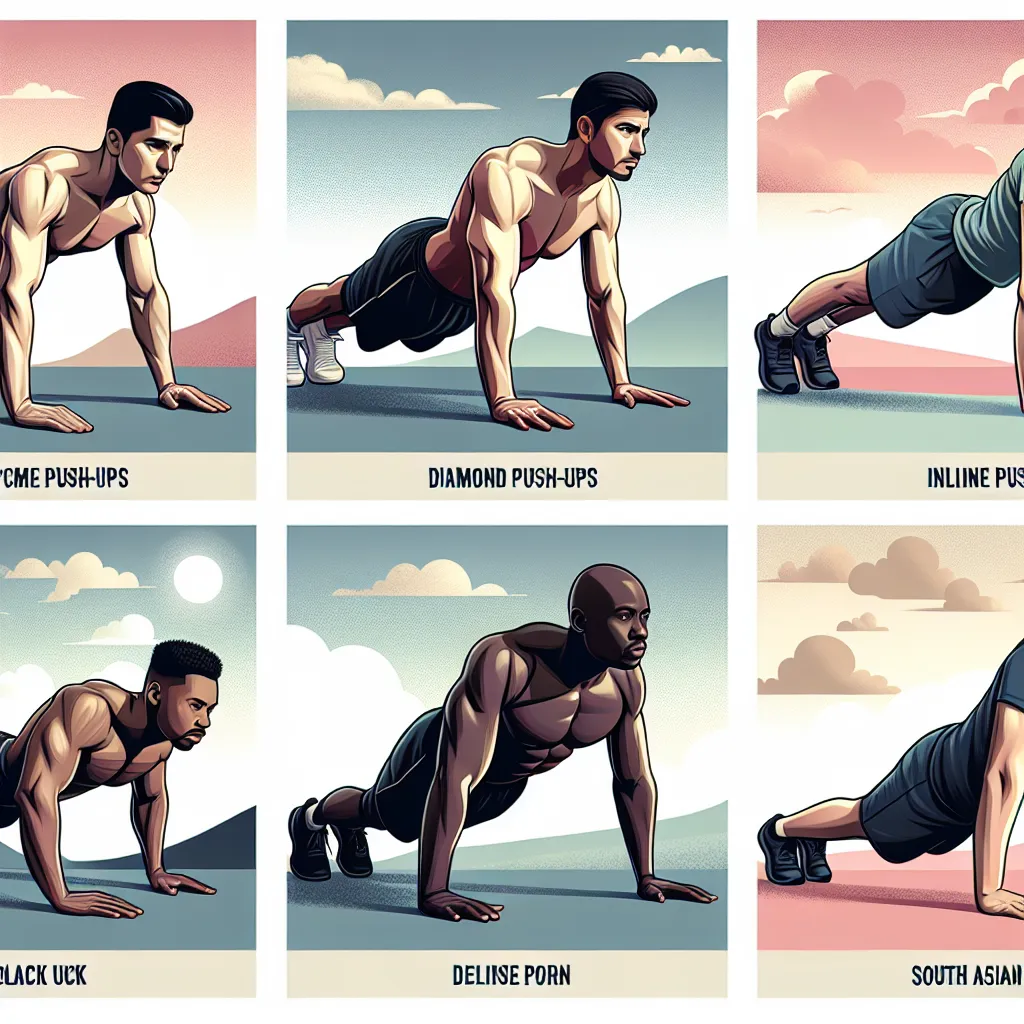Push-ups are a fundamental exercise in fitness routines, but did you know that “push-up variations” can also be a valuable vocabulary topic for IELTS preparation? Let’s explore this concept, its usage, and how it can boost your English language skills.
Definition and Pronunciation
“Push-up variations” (noun phrase)
Pronunciation: /pʊʃ ʌp veəriˈeɪʃ(ə)nz/
Definition: Different modifications or alterations to the standard push-up exercise, designed to target specific muscle groups or increase the difficulty level.
Context and Usage
Examples in Context
-
The fitness instructor demonstrated several push-up variations to challenge the advanced students in the class.
Analysis: This sentence shows how the term is used in a fitness setting, indicating that push-up variations are used to increase difficulty for more experienced exercisers. -
For her IELTS Speaking test, Sarah confidently discussed various push-up variations and their benefits for overall fitness.
Analysis: This example illustrates how the topic can be used in an IELTS context, demonstrating the candidate’s ability to discuss fitness-related vocabulary. -
The physiotherapist recommended specific push-up variations to help strengthen John’s rotator cuff muscles.
Analysis: Here, the term is used in a medical context, showing how push-up variations can be tailored for therapeutic purposes. -
The military fitness test included a requirement to perform three different push-up variations within a set time limit.
Analysis: This sentence showcases the use of the term in a military or assessment context, emphasizing the variety and challenge of different push-up types. -
In her IELTS Writing Task 2 essay on fitness trends, Maria included a paragraph about the growing popularity of push-up variations in home workouts.
Analysis: This example demonstrates how the topic can be integrated into IELTS Writing tasks, showing the candidate’s ability to discuss current fitness trends.
Common Contexts
Push-up variations are frequently discussed in:
- Fitness and exercise programs
- Physical therapy and rehabilitation
- Military and law enforcement training
- Sports performance enhancement
- Health and wellness articles
Vocabulary Analysis
Word Structure
The phrase “push-up variations” consists of two main parts:
- “Push-up” (compound noun): A combination of the verb “push” and the preposition “up”
- “Variations” (plural noun): Derived from the verb “vary” with the suffix “-ation” to form a noun, and pluralized with “-s”
Synonyms and Related Terms
- Push-up modifications
- Push-up alternatives
- Push-up adaptations
- Push-up types
- Push-up styles

Memorization Techniques
Mind Mapping
Create a mind map with “Push-up Variations” at the center, branching out to different categories such as:
- Difficulty levels (e.g., beginner, intermediate, advanced)
- Muscle focus (e.g., chest, triceps, shoulders)
- Equipment used (e.g., stability ball, resistance bands)
- Body position (e.g., decline, incline, single-arm)
Visualization Technique
Imagine yourself in a gym, moving through different push-up positions. Visualize the changes in hand placement, body angle, and the muscles being engaged. This mental imagery can help reinforce the concept of variations in your memory.
Practice Exercises
IELTS Speaking Practice
Describe a fitness routine that incorporates various push-up variations. Include details about:
- The types of push-ups used
- The benefits of each variation
- How the routine progresses in difficulty
IELTS Writing Task 2 Practice
Write an essay discussing the following topic:
“Some people believe that bodyweight exercises like push-up variations are more effective than gym equipment for overall fitness. To what extent do you agree or disagree?”
In your essay, be sure to:
- Use the term “push-up variations” naturally within your argument
- Provide specific examples of push-up variations and their benefits
- Compare and contrast bodyweight exercises with gym equipment
Vocabulary Extension Exercise
Create sentences using the following related terms:
- Muscular endurance
- Core stability
- Progressive overload
- Functional fitness
- High-intensity interval training (HIIT)
Conclusion
Mastering the term “push-up variations” and its related vocabulary can significantly enhance your performance in the IELTS test, particularly in Speaking and Writing tasks. By understanding the context, analyzing the word structure, and practicing with real IELTS-style exercises, you’ll be well-prepared to use this fitness-related vocabulary confidently.
Remember to incorporate these terms into your regular English practice, whether you’re discussing health and fitness topics or writing about exercise trends. The more you use these words in context, the more natural they’ll become in your language repertoire.
We encourage you to share your experiences with learning and using this vocabulary in the comments section below. Have you encountered “push-up variations” in your fitness routine or English studies? How has this knowledge improved your IELTS preparation? Your insights could be valuable to other learners on the same journey!